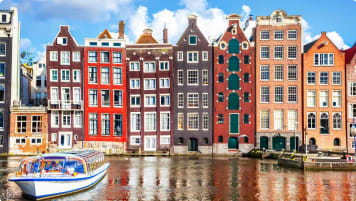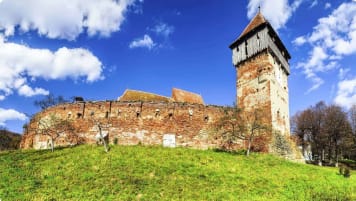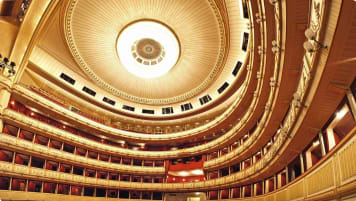Ecuador and Peru Archaeology tour
This 22-day small group tour highlights the most prominent ancient ruins and archaeological finds across Ecuador and Peru and showcases the vast culture and impact of pre- and post-Inca civilization.
From £8,700GBP
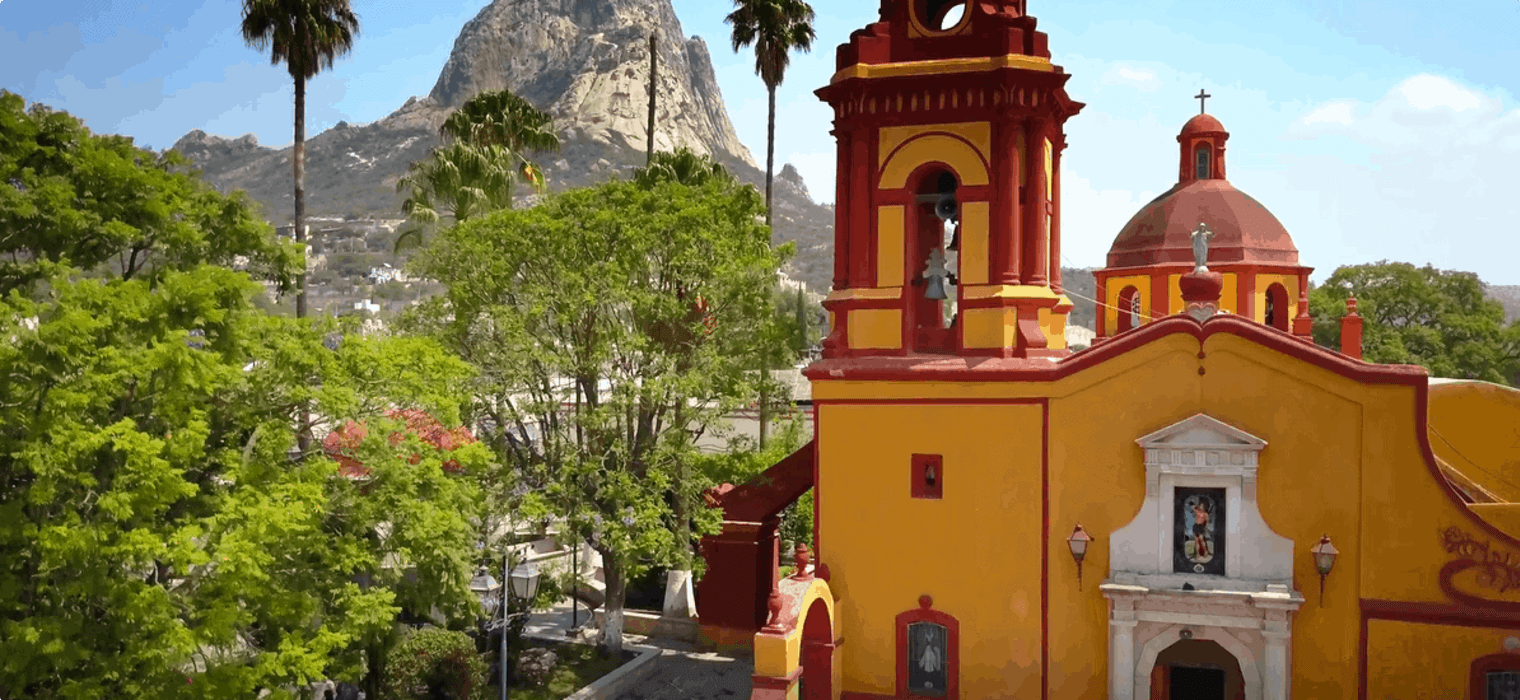
Highlights
- 1. Visit UNESCO World Heritage listed city of Cuzco in Peru
- 2. Visit Ingapirca, Ecuador's most preserved archaeological site
- 3. Travel to visit Kuelap, once home to the mysterious "warriors of the cloud forest" from Peru
- 4. Explore Cochasqui Archaeological Park in Ecuador
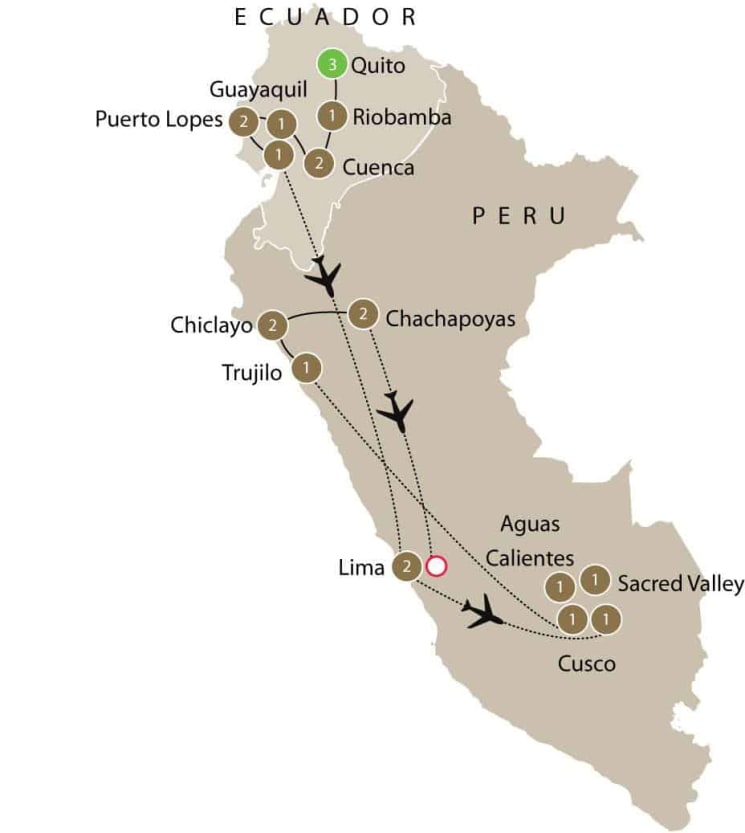
Departure Dates
| Departure Date | Price |
|---|---|
| 01 April 2026 Ends 22 April 2026 • 22 days £8,700 Twin £10,050 Single Available | Selected |
| 31 March 2027 Ends 21 April 2027 • 22 days £8,804 Twin £10,206 Single Available |
Ecuador and Peru Archeology Small Group Tour
This 22-day Ecuador and Peru tour highlights the most prominent ancient ruins and archaeological finds across Ecuador and Peru and showcases the vast culture and impact of pre- and post-Inca civilisation.
Throughout our 22 days together, we will explore the archaeological treasures that present a window to the past and hear about the legacies of ancient civilisations in the area. Beginning in Ecuador and ending in Peru, there will be much to explore as we make our way along the Inca Trail.
The Inca civilisation flourished in South America in the 15th to 16th centuries. After establishing its capital in Cusco (often spelt Cuzco) in what is now Peru in the 12th century, the Inca began their conquests in the 15th century and eventually ruled an empire across western South America. Their territories covered an expanse covering the Pacific coast and Andean highlands, from Quito, capital of modern Ecuador, to central Chile. The Inca established an advanced civilisation, with complex government and religious institutions, a vast road network, and incredible architecture. They ruled over 12 million people until the Spanish conquest in the 16th century.
The Inca left no written records. What we know of them we know from preserved oral tradition, the written records of the colonising Spanish, and the archaeological ruins of their once great empire.
Ecuador and Peru Small Group Tour Itinerary
Our guided tour starts in Quito, Ecuador where we will marvel at four of Ecuador's most significant archaeological sites: Rumiucho, Tulipe, Cochasqui, and Quitoloma. As we make our way South, we make excursions to explore ancient ruins, including the largest in Ecuador, Ingapirca near Cuenca. Before leaving the country, city tours of Cuenca, Guayaquil and Puerto Lopez will introduce us to Spain's colonial influence as it conquered the Incan Empire in the 1500s and established a new society.
From there, our escorted tours fly to Lima where we will take in the city sights before we visit Pachacamac with a local guide. We will fly to Cusco for a local tour of the historical centre which includes a walking tour of Cusco Cathedral, Coricancha and four additional ruin sites. We also board the Vistadome Train for the 90 minute panoramic trip to Aguas Calientes. We make our way toward the Sacred Valley, which with Cusco and the ancient city of Machu Picchu formed the centre of the Inca Empire. We will experience the magic of Machu Picchu first-hand, immersing ourselves in Inca culture, the local flora and fauna, scenery, and history. We have many more destinations to visit along the way until we finish this unforgettable journey with the Lord of Sicán's tomb in Chiclayo and Kuélap, home to the mysterious 'warriors of the cloud forest'.
Our adventure will bring us to several UNESCO-listed World Heritage Sites across Ecuador and Peru, including Ingapirca, Machu Picchu, and Kuélap. We will see amazing vistas of the Ecuadorian highlands at Cajas National Park, as well as panoramic views of the Peruvian Andes and Pacific beaches. We will learn extensively about Ecuadorian and Peruvian culture and sample the local cuisine at our meals. You might want to start reading about Ecuador and Peru with our country profiles.
For more details of our small group tours, click the ‘Top 5’ or ‘Itinerary’ buttons above! If you’re keen to experience this tour, please call or send an email. Or, to book, simply fill in the form on the right hand side of this page.
For more information on Odyssey Traveller and our educational small group tours, visit and explore our website, these pages in particular:
Tour Notes
Luggage allowance restrictions may apply on domestic flights inside South America.
Gallery
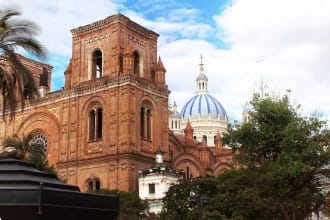
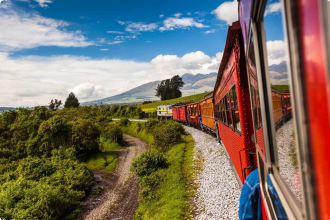
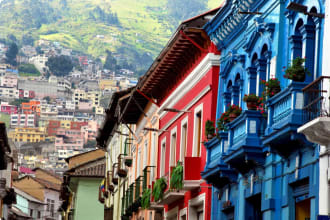

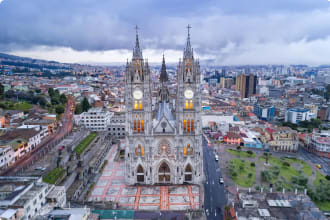
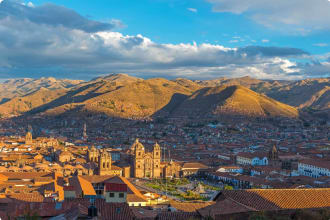
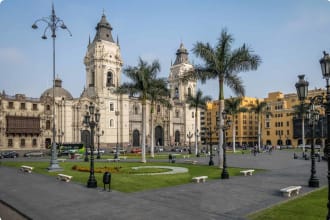

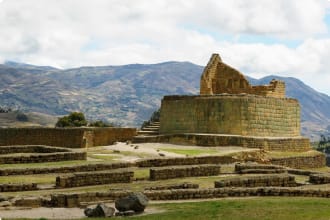
Itinerary
22 days
Day 1: Quito
Accommodation: 3 nights at Patio Andaluz Hotel or similar.
Upon arrival to Quito, we will each make our way to the hotel individually. In the evening, we will gather for a welcome briefing and dinner.
Day 2: Quito
Accommodation: Patio Andaluz Hotel or similar.
We will travel 30 km north of Quito to Pucará de Rumicucho. It is at the ruins of this Incan fortress, built between 1480 and 1500 by Tupac Yupanqui, that our understanding of the Inca military might begins. Their expansion from now-Peru demanded the widespread construction of stone fortresses such as this one. Situated at a high elevation and with views to the surrounding three mountains, any number of invasions could have been spotted and thwarted from this vantage. From here, we will travel to the Tulipe museum. While Inca culture tends to dominate public perception of Ecuador’s native culture, the Yumbo people resided in this area long before the Incas did. It is at the Tulipe museum and archaeological site that we can see evidence of the Yumbo culture and their construction of pools to collect natural spring water. Some Inca ruins have been found slightly up hill from the site of the pools, suggesting the importance of the water source to be conquered.
Day 3: Quito
Accommodation: Patio Andaluz Hotel or similar.
Today will be spent exploring the ruins of Cochasqui and Quitoloma. Spanning 84 hectares and with its 280 degree views, Cochasqui marks one of Ecuador’s most expansive archaeological sites as there are a total of 15 flat-topped pyramids and 21 funerary mounds made from volcanic rock. We will be sure to peer into the largest pyramid’s gap created using water on the fragile volcanic building material by looters in search of treasure. Not to be overlooked, Quitoloma is also considered one of the biggest military fortresses in the area. As part of a chain of high-vantage military command posts, called Pambamarca, Quitoloma was constructed to mimic the topography of the land by modifying the large hill on which it is perched to create interior terraces of different levels.
Day 4: Quito to Riobamba
Accommodation: 1 night at La Andaluza Hotel or similar.
While on route to Riobamba, we will stop off at Pucará del Salitre in Cotopaxi. Regarded as a military stronghold due to the steep inclining hills surrounding it, Pucará del Salitre was used by the Incans to conduct surveillance of the area. They monitored passing armies, resistance groups and population migrations and had a centralized position for communications to the populated areas of Quito, Tambo Real and Amazonia throughout the time of the Incan Empire.
Day 5: Riobamba to Cuenca
Accommodation: 2 nights at Los Balcones Hotel or similar.
This travel day is highlighted by a visit to Ingapirca. Often regarded as Ecuador’s most famous and largest Inca site, it originally was the location of a temple constructed and used by the Cañiri people. Following a prolonged struggle, the Incas conquered and expanded the site to one of their largest administrative centre and military fortress in the early 1500s. Ingapirca, as dubbed by the Incans, translates to “wall of the Inca” and stands as a symbol of Inca strength since many soldiers were stationed there. Because of its size and strategic positioning, it has been nominated to the UNESCO world heritage lists for its cultural significance as part of the Great Inka Trail, or ‘Royal Highway’, for the Incan Empire.
Day 6: Cuenca
Accommodation: Los Balcones Hotel or similar.
We will begin the day by visiting the Pumapungo Archeological Park in the historic centre of Cuenca. The temperate climate of the site will provide for some great sightings of native and exotic flora. The site was primarily used for religious and social purposes, such as women’s weaving and cooking, rather than for military purposes; However, its infrastructure was fortified and constructed to be used by the military if needed.
We will then see the influence of Spanish colonization during a visit to Todos los Santos, the first Catholic church established in the area, as well as throughout a city tour of the cobblestone streets of UNESCO world heritage site listed Cuenca. Founded in 1557 under Spanish King Charles V’s renaissance-style vision, the religious architecture is something to note as wander the streets.
Day 7: Cuenca to Guayaquil
Accommodation: 1 night at Whyndham Hotel or similar.
Shortly after leaving Cuenca, we will stop in Cajas National Park, a UNESCO-protected site, for stunning vistas of the Equatorial highlands. The park has been protected by UNESCO for the extreme diversity of ecosystems including Páramo, Montane forest, cloud forest, and mangrove. Eagle-eyed tourists might be able to spot a wide variety of native fauna, including Andean toucans, condors, hummingbirds, rabbits, deer, and pumas, among others. Despite its altitudes as high as 14,000 ft, its proximity to the equator and the Continental Divide protect it from every snowing. Even still, it does get very chilly!
We will then continue our travels to Guayaquil, where we will have a short tour of the city best known for its brightly-coloured riverfront town square, Las Peñas. This 400-year-old neigbourhood, bearing the name ‘The Rocks’ due to its cliffed locale, was dubbed a cultural heritage site in 1982.
Day 8: Guayaquil to Puerto Lopez
Accommodation: 2 nights at Mandala Hotel or similar.
While on route to the coastal town of Puerto Lopez, we will visit the Santa Elena Archaeological site, also referred to Sumpa and Las Vegas. This site is dated to the Ecuadorian Paleo-Indian period in approximately 700 B.C. The site is the furthest east and closest to the coast from that period, which distinguishes the cultural artifacts found here from other sites because of their economic and cultural reliance on fishing.
The site is most famous for its large cemetery containing approximately 200 skeletons, including those of the ‘Lovers of Sumpa, from which the museum derives its name. One of three exhibited burial sites, the Lovers of Sumpa are the remains found of a man and woman embracing, the man’s hand on the woman’s waist and the woman’s head close to the man’s chest. They are considered to be the Romeo and Juliet of Ecuador, serving as a muse for artists and musicians around the globe.
Day 9: Puerto Lopez
Accommodation: Mandala Hotel or similar.
Today we will travel to Agua Blanca in the Machalilla National Park. We will take a tour of one of the only remaining ruins of the Monteño civilization and one of the oldest archaeological sites in all of South America. As one of the last areas to be colonized, the 3,000-year-old community, its temples and houses, have been well preserved and continues to operate thanks to the 86 families who inhabit the community.
Not only will we marvel at the archaeology at the site, but we will also be awe-struck by its natural beauty. There is a small, easy hike, which follows the curvature of the river to a sulfur lagoon. Tourists are encourage to take a dip, apply face masks of mud collected from the the bottom of the lagoon, and try to spot howling monkeys, butterflies, and hummingbirds among the overhanging tree branches and flowers.
Before returning to Puerto Lopez, we will stop at Los Frailes beach, admired as one of the most beautiful beaches in Ecuador. There, we will get a panoramic view of the white sand beach and the Pacific ocean.
Day 10: Puerto Lopez to Guayaquil
Accommodation: 1 night at Whyndham Hotel or similar.
Today we will return to Guayaquil in preparation for the next day’s flight.
Day 11: Guayaquil to Lima
Accommodation: 2 nights at Jose Antonio Hotel or similar.
We will be transported to the airport and fly to Lima. Upon landing, we will be picked up and transferred to our hotel in time for dinner together.
Day 12: Lima
Accommodation: Jose Antonio Hotel or similar.
In the morning, we will have a city tour of Lima. As one of the oldest civilizations in America and as the modern capital of Peru, layers of architecture from several different centuries can be seen as we walk past contemporary skyscrapers and round corners to find pre-Columbian temples. For example, we will visit the sacred Huaca Pucllana, a pyramid in the Miraflores district. Established approximately 500 B.C, the site was central to early Peruvian culture as a hub with administrative and religious sectors on east and west sides of a dividing wall.
In the afternoon, our local guide will take us 40 kilometers south east of the city to visit Pachacamac, a ceremonial site dating back to approximately 100 AD. The origins of the site were constructed by the Ichma people, then later adapted by the Incas, upon their arrival in 1450, into much of what we will see today. The site is named after the god of Pachacamac, who was the child of the sun and creator of the world. Because of the site’s long history and great mix of influences, the museum is able to display artifacts discovered from the Wari, Lima, Ichma, and Inca cultures.
Day 13: Lima to Cuzco
Accommodation: 1 night at Jose Antonio Hotel or similar.
After breakfast, we will be transferred to the airport for our flight to Cusco. Ancient ruins are scattered throughout the city as it is one of the oldest cities in South America which has continuously been inhabited, first by the Marcavalle people in approximately 1,000 B.C., followed by the Chapanatas (800 to 600 B.C), Qotakalli (600 B.C. to 750 A.D.), Waris (750 to 900 A.D.), Killkes (900 to 1200), Incas (1200 to 1532) and Spanish (1532 to Peruvian Independence in 1821).
Once we’ve been transferred to our hotel and checked in, we will depart for a tour of the historical centre, where we’ll be able to see evidence of several of its later historical residents. The tour will take us to see the Cusco Cathedral, completed 1654. The Cathedral was deemed significant to Cusco as part of the city’s listing as a UNESCO World Heritage Site in 1983, due to its Baroque style and vast collection of colonial art.
We will also visit the most important Inca site, the Corciancha Incan Sun Temple, dedicated to the god Inti. The impressive masonry was detailed with gold and jewels when first constructed in 1200, before the Spanish looted the site.
The ruins of Sacsayhuaman, a large stone complex built by the Killke people in 11oo, are another site that was plundered by the Spanish, who brought the gold and silver that previously adorned the Temple to their base at Cajamarca following forceful seizure of the area in 1532.
We will also visit the Inca Qenqo temple, whose unique construction was completed by carving out maze-like corridors in from a rock formation. Reasons for this are unconfirmed, but it guessed that it liquids such as holy water, chicha (corn beer), or even blood were poured through it as part of a death ritual.
Part of the tour will also take us to Puca Pucara, which translates from the Inca language Quechua to ‘red fortress’, named for the rouge tint that its stones display when the sun sets. It was here that an Inca military guard post protected Cusco from invaders of the East, specifically tribes from the Amazon.
Finally, we will see the Tambombachay Inca baths. Two engraved aqueducts divert water from nearby streams to the baths believed to be used to cleanse Inca elite and religious leaders’ body and soul.
Day 14: Cuzco to Aguas Calientes
Accommodation: 1 night at El Mapi Hotel or similar.
Our day begins early as we make our way to the Sacred Valley. We will stop at the Pisaq ruins and markets. Legend has it that the royal buildings at Pisaq were constructed at the request of Pachacuti, ruler of Cusco from 1438 to 1471, to commemorate vanquishing the Cuyos ethnic group from the area. The 4km² site displays the remains of over 20 towers, temples, palaces, and even a rare insight into Inca furniture, namely the Tianayuc stone two-seater.
The ruins of the Ollantaytambo fortress, which we will also visit, was similarly constructed to commemorate Inca victory over the Tambos. The fortified palace served as the headquarters of Manco Inca Yupanqui’s resistance to Spanish conquest.
We will then board the Vistadome train from Ollantaytambo station for the 90-minute panoramic journey to Aguas Calientes. After checking in, we will have dinner at a local restaurant.
Day 15: Aguas Calientes to Sacred Valley
Accommodation: 1 night at Casa Andina Premium Hotel or similar.
Today we will board an early bus to the world-renowned Inca legacy, Machu Picchu. The immense site of approxiamtely 200 structures was yet another royal estate commissioned by Pachacuti to celebrate Inca conquer of ethnic groups in the Vilcabamba Valley. The multi-purpose site sandwiched between the Andean mountain range and the Amazon Basin was used for religious ceremony and royal stays. It also is a feat of innovative land use as tiered-farm plains were used to cultivate crops and gardens down the steep slopes of the site. The Incas abandoned Machu Picchu at the time of the Spanish conquest and the site was mostly overgrown and forgotten until it was rediscovered by professor Hiram Bingham in 1911. It became a UNESCO World Heritage site in 1983, hailed as a “masterpiece of art, urbanism, architecture and engineering of the Inca civilization.”
You will be free to explore the site and grab lunch at your leisure before we head to the train station in the afternoon to return to Ollantaytambo. After some time to unwind at the hotel, we will head to dinner together.
Day 16: Sacred Valley to Cuzco
Accommodation: 1 night at Jose Antonio Hotel or similar.
While headed back to Cusco, we will visit the Inca salt mines at Maras. Salt is extracted from evaporated salt water that underground streams pool into the rectangular ponds, leaving the white crystals. Now a community-enterprise, families own plots and harvest the salt in much the same way that the Incas did.
Our next visit is the ancient farm laboratory in Moray, which perfectly exemplifies the revolutionary thinking of the Inca civilization. The Incas managed to create distinct climates for farming different crops on the same site by cutting terraces in a circular structure, resembling a Roman ampitheatre.
Our final stop of the day will be the colourful town of Chinchero, a textile hub approximately 40 minutes outside of Cusco. In the center of town are the ruins of an Incan palace, which in 1607, was overlayed by a Spanish church. The town is often referred to as the ‘birthplace of the rainbow’, since it was established as the capital of Peruvian weaving.
Day 17: Cuzco to Trujillo
Accommodation: 1 night at Libertador Hotel or similar.
Today we leave the high-altitude and travel via Lima to the coastal, colonial town of Trujillo. We will arrive in time for dinner together. Trujillo cuisine primarily consist of a variety of fish and meat stews, such as Shambar or Sopa teologa. The region is also well known for its dessert called King Kong, which are layered biscuits with pineapple jam and a gelatinous cream. This night would also be a great opportunity to sample Chicha de Jora, a corn beer accidentally-produced in during the time of Inca Tupac Yupanqui. Tradition states that Chicha de Jora was first made when stores of corn were flooded then fermented. The owners discarded the yield, but the impoverished locals reclaimed it to drink. It later became a drink favoured by the nobility of the Incan empire and used in religious ceremony.
Day 18: Trujillo to Chiclayo
Accommodation: 2 nights at Casa Andina Select Hotel or similar.
Once finished breakfast, we will visit the Sun and Moon Huacas, ceremonial pyramids created by the Moche civilization. The Temple of the Sun was built and rebuilt several times throughout 100 and 800 A.D. These reconstructions can be seen by the differently aged layers of brick. Nearly two thirds of the Sun Temple has been effected by erosion, not only as a result of natural weather conditions and but also because Spanish pillagers diverting the Moche river closer to the site to transport the gold and artifacts. Despite being smaller, the Moon Temple and its many wall murals are much better preserved as it was left largely untouched by the Spanish looters. Remaining artifacts from both temples are exhibited in the Huacas de Moche Museum.
Making our way toward Chiclayo, we will take a slight detour to El Brujo archaeological complex. This somewhat newly excavated complex is also from the Moche period, approximately 200 A.D., and was functional until 900 A.D. In 2005, the tomb of Lady Cao, a powerful female leader of Chicama, was uncovered with over 100 metal ornaments.
Day 19: Chiclayo
Accommodation: Casa Andina Select Hotel or similar.
Today will be spent at Huaca Rajada, a political centre for the Moche civilisation, where warrior El Señor Sicán, the Lord of Sicán, as well as six sacrifices were buried. The Lord of Sicán was a warrior deity who ruled the area in the 400s. The site of his tomb was excavated throughout the 1990s and a number of valuable objects were found with him, including a ceremonial clothing and an ornate gold mask on display in the Tumbas Reales Museum.
We will also stop at the Sicán Museum, which houses artifacts form over 16 sites that provide a rare window into the Sicán culture, as inferred by the Sicán Archaeological Project founded in 1978.
Day 20: Chiclayo to Chachapoyas
Accommodation: 2 nights at Achumaqui Hotel or similar.
We will depart from Chiclayo after lunch for Chachapoyas. Along the way we will find a nice spot to stop for a boxed lunch.
Day 21: Chachapoyas
Accommodation: Achumaqui Hotel or similar.
Today we will visit the walled city of Kuélap. This ornate fortress was built by the Chachapoya people in as early as 800 A.D. above the Utcubamba Valley. The stones of the circular structures are engraved with various geometric shapes and animals. Despite being conquered by the Incas, the Chachapoyas continued to live as normal. But then, similarly to Machu Picchu, the site was abandoned when the Spanish conquistadors expanded their reach. Despite erosion and overgrowth, the site was happened upon in 1843 and excavations began soon after.
Our day will conclude with a farewell dinner in Chachapoyas.
Day 22: Chachapoyas to Lima Airport
After breakfast, we will be transferred to Jaén airport (approximately 3.5 hour drive) to fly to Lima.
Tour Notes
- Luggage allowance restrictions may apply on domestic flights inside South America
Includes / Excludes
- What’s included in our Tour
- 21 nights of hotel accommodation.
- 21 breakfasts, lunches and dinners as indicated.
- Applicable entry fees and services of local guides.
- Touring by comfortable and modern coach.
- Field trips as indicated.
- Local internal flights as listed on the itinerary, in economy class
- Gratuities and necessary tips.
- Services of an Odyssey program leader.
- Detailed tour information booklet.
What’s not included in our Tour
- Return economy class international airfare and departure taxes.
- Comprehensive international travel insurance.
- Items of a personal nature such as telephone calls and laundry.
- Meals not specified in the itinerary.
Participants must be able to carry their own luggage, climb and descend stairs, be in good health, mobile and able to participate in 3-5 hours of physical activity per day, the equivalent of walking / hiking up to 8 kilometers per day on uneven ground.
Book now
Make it a private tour
Easing your journey
Crossing international borders with restrictions
The list of requirements to travel internationally has changed and will continue to change for several years. Odyssey is here to assist you in managing your way through these requirements:
For more information see our Crossing international borders with restrictions page.
Book With Confidence
If less than 30 days before your tour starts you are unable to travel as a result of Government travel restrictions, Odyssey Traveller will assist you with a date change, provide you with a credit or process a refund for your booking less any non-recoverable costs.
See Terms and conditions for details.
Peace of Mind Travel
The safety of our travellers, tour leader, local guide and support staff has always been our top priority and with the new guidelines for public health and safety for keeping safe for destinations around the world, we’ve developed our plan to give you peace of mind when travelling with us.
See Peace of Mind Travel for details.
Reading List Download PDF
The Ecuador Reader: History, Culture, Politics
Carlos de la Torre and Steve Striffler (Editors)
Spanning the years before the arrival of the Spanish in the early 1500s to the present, this rich anthology addresses colonialism, independence, the nation’s integration into the world economy, and its tumultuous twentieth century. Interspersed among forty-eight written selections are more than three dozen images.
Culture and Customs of Ecuador
Michael Handelsman
Through this overview of its history, religious institutions, literature, social customs, cinema, media, and visual and performing arts, Ecuador emerges as a vibrant microcosm of Latin America. Students and other readers will learn how Ecuadorian society blends pre-Colombian, colonial, modern, and postmodern cultural forces.
Turn Right at Machu Picchu: Rediscovering the Lost City One Step at a Time
Mark Adams
In 1911, Hiram Bingham III climbed into the Andes Mountains of Peru and “discovered” Machu Picchu. While history has recast Bingham as a villain who stole both priceless artifacts and credit for finding the great archeological site, Mark Adams set out to retrace the explorer’s perilous path in search of the truth—except he’d written about adventure far more than he’d actually lived it. In fact, he’d never even slept in a tent.
Turn Right at Machu Picchu is Adams’ fascinating and funny account of his journey through some of the world’s most majestic, historic, and remote landscapes guided only by a hard-as-nails Australian survivalist and one nagging question: Just what was Machu Picchu?
The Conquest of the Incas
John Hemming
From the first small band of Spanish adventurers to enter the mighty Inca empire to the execution of the last Inca forty years later, it is the story of bloodshed, infamy, rebellion and extermination, told as convincingly as if it happened yesterday. It also tells the social impact of the conquest, on ordinary Peruvians forced to work for Spanish masters or in hellish silver and mercury mines, on change of religion and government, and how survivors of the Inca elite reacted to the new order.
The Peru Reader: History, Culture, Politics
Orin Starn, Ivan Degregori, and Robin Kirk
Unparalleled in scope, the volume covers Peru’s history from its extraordinary pre-Columbian civilizations to its citizens’ twenty-first-century struggles to achieve dignity and justice in a multicultural nation where Andean, African, Amazonian, Asian, and European traditions meet. The collection presents a vast array of essays, folklore, historical documents, poetry, songs, short stories, autobiographical accounts, and photographs. Works by contemporary Peruvian intellectuals and politicians appear alongside accounts of those whose voices are less often heard—peasants, street vendors, maids, Amazonian Indians, and African-Peruvians. Including some of the most insightful pieces of Western journalism and scholarship about Peru, the selections provide the traveler and specialist alike with a thorough introduction to the country’s astonishing past and challenging present.





